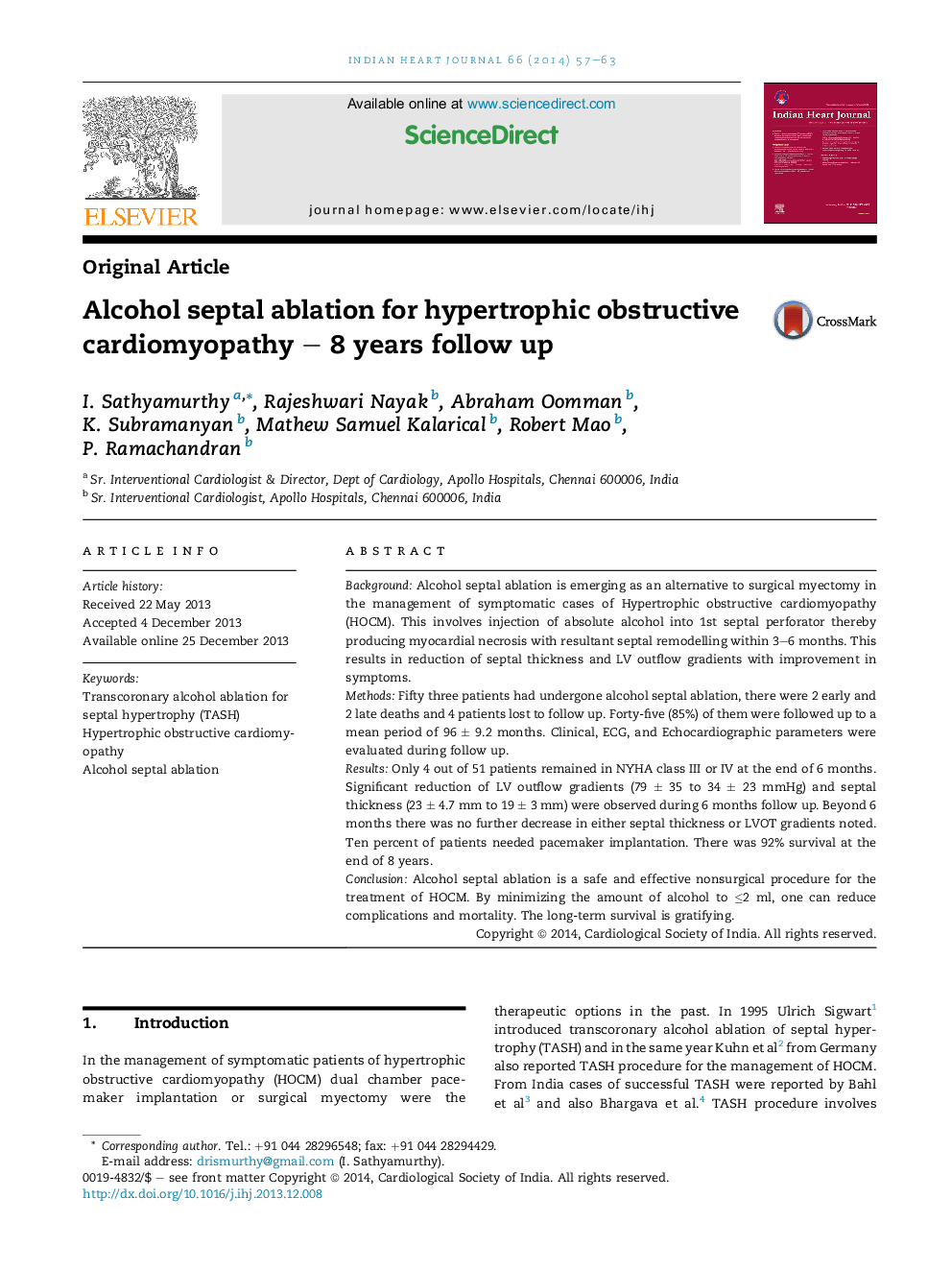| Article ID | Journal | Published Year | Pages | File Type |
|---|---|---|---|---|
| 2928267 | Indian Heart Journal | 2014 | 7 Pages |
BackgroundAlcohol septal ablation is emerging as an alternative to surgical myectomy in the management of symptomatic cases of Hypertrophic obstructive cardiomyopathy (HOCM). This involves injection of absolute alcohol into 1st septal perforator thereby producing myocardial necrosis with resultant septal remodelling within 3–6 months. This results in reduction of septal thickness and LV outflow gradients with improvement in symptoms.MethodsFifty three patients had undergone alcohol septal ablation, there were 2 early and 2 late deaths and 4 patients lost to follow up. Forty-five (85%) of them were followed up to a mean period of 96 ± 9.2 months. Clinical, ECG, and Echocardiographic parameters were evaluated during follow up.ResultsOnly 4 out of 51 patients remained in NYHA class III or IV at the end of 6 months. Significant reduction of LV outflow gradients (79 ± 35 to 34 ± 23 mmHg) and septal thickness (23 ± 4.7 mm to 19 ± 3 mm) were observed during 6 months follow up. Beyond 6 months there was no further decrease in either septal thickness or LVOT gradients noted. Ten percent of patients needed pacemaker implantation. There was 92% survival at the end of 8 years.ConclusionAlcohol septal ablation is a safe and effective nonsurgical procedure for the treatment of HOCM. By minimizing the amount of alcohol to ≤2 ml, one can reduce complications and mortality. The long-term survival is gratifying.
